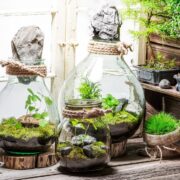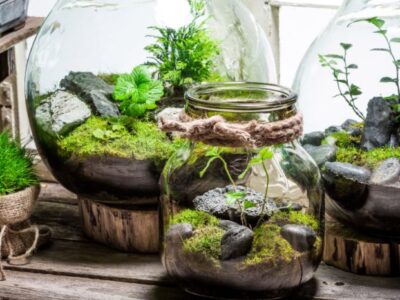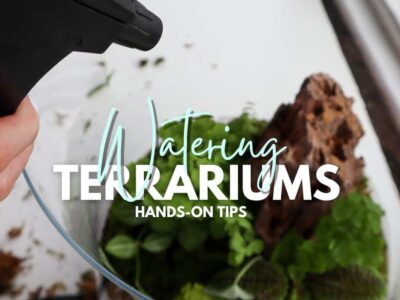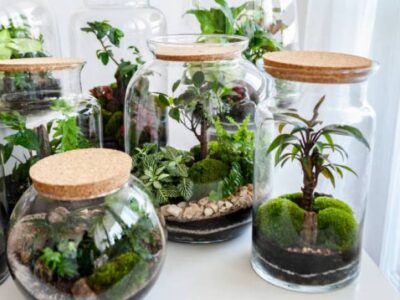Indoor House Plants are a popular feature in many homes. They add color and life to any room, but they need care too! In this blog post, we will give you advice on how to keep your Indoor House Plants happy.
We’ll discuss what kinds of plants can go indoors, the best soil types for indoor planting, and how often you should water them. Read on for our comprehensive plant care guide so that you always have beautiful green leaves in your home!
Indoor House Plants have several benefits, but the two big ones are that they filter toxins from your air, and they can lower stress levels.
This makes them especially helpful to people who live in more polluted areas where it is tough to find fresh breathing air. Indoor House Plants also lessen eye strain because they provide you with something different than the wall behind the desk.
What Are the Best Plants Indoor House Plants That Are Easy to Grow and Maintain?

First, we need to talk about what kinds of plants can go indoors–let’s start with the most popular ones. You could have an aloe vera plant or a palm tree in your living room and they would be just as happy as if they were outdoors!
But while those two are common choices, there are lots more options. For example, you could have a cactus in your kitchen or an ivy plant in the bedroom.
The best plants for indoors are low-light lovers. Plants like bamboo, peace lilies and spider plants do well in lower lighting conditions because they have evolved to grow with less light exposure.
However, it is important to keep in mind that some other types of plant species may need more sunlight than you may provide them. If this is the case, you should get a plant light to supplement the amount of natural sunlight they are getting.
Identification of house plants is important you can do the house plant identification by leaf shape.
What Are the Best Soils for Indoor House Plants?
Some people choose to put their houseplants in soil. This is a great way to ensure they get enough water, but it can be messy! If you want something more convenient, try using a potting mix or peat moss instead. You will need to use fertilizers every few weeks to make sure your plants are getting the nutrients they need.
How Often Should You Water Indoor House Plants?
The best way to tell if an indoor plant needs watering is by touching the soil with a finger or pencil–if it’s dry, that means it’s time for some fresh H20!
If your houseplants have been given too much water, they will show signs of wilting. If this happens, just let them dry out for a few days and then resume watering normally.
Indoor Plant Care Routine:
- Make sure you give indoor houseplants plenty of water by watering once per day, then letting it dry out before repeating again.
- Use a soil mix or peat moss instead of dirt so it is easier to maintain moisture in the pot.
- If your houseplants have been given too much water, they will show signs of wilting. If this happens, just let them dry out for a few days and then resume watering normally.
- Make sure the plant is in an area with enough sunlight exposure if it needs that kind of light to survive!
- Never use a chemical pesticide–always choose organic sprays for plants.
- Use natural fertilizers like compost or mulch to feed the soil in your pots and keep them healthy!
- Get a plant stand to increase the number of light plants need.
- Don’t overwater your houseplants because they will grow mold and rot, which are toxic!
Ways To Avoid Pests That Attack Your Indoor House Plants:
- The best way to avoid pests in your home is by keeping the plants’ leaves clean. Remove any dust, hair, or other debris that might be affecting their health.
- You can also use natural pest control sprays made from things like neem oil and horticultural oil–but these are toxic so only spray them on the plant’s leaves!
- Be sure to create plenty of space for your houseplants by keeping them in the correct size pot. If they are too cramped, it will be much easier for pests to find and attack any small plants that might exist there.
- Keep Indoor House Plants up away from windows because this is a great place for bugs to thrive!
- If you want the plants in your house to be pest-free, keep them away from any outside sources.
- Make sure that there is no way for pests like ants or aphids can get into your potting mix by using a glass top container with holes on it instead of soil. This will make it impossible for them to get at the plants!
- Keep your houseplants away from areas like kitchen counters that might be harboring pests.
- Use sticky traps or homemade insecticides (like citrus rinds) to keep bugs out of your home and off your Indoor House Plants!
Frequently Asked Questions
Do Houseplants Need an Air Circulation?
The homeowner should keep in mind that some plants need more sunlight than they provide them with, and if this is the case you will want to buy a plant light to supplement their natural exposure. While it may be convenient for some people to put houseplants in soil, it can be messy and hard to maintain the plant’s health. Therefore, many people like using a potting mix or peat moss instead because they are more convenient choices that still help ensure plants get enough water.
What Causes Brown Patches on My Indoor Plant?
This question has a lot of different answers depending on the type of plant. However, one thing is for sure- not watering your houseplants enough can cause them to wilt and eventually kill it off. Another common reason these brown patches occur is that there’s too much water in the pot! Make sure you’re keeping an eye on how wet this area gets before deciding whether to water the plant again.
How to Save Your Dying Plant?
Don’t get discouraged if your plants are dying–it’s not uncommon for houseplants, especially those that require more care than others! If you want to try and save it, read on below about what can be done:
- Make sure there is no more water in the pot–watering your plants too much can be just as bad as not watering them enough.
- If you use soil, switch to peat moss and soil mix, or try using watered-down clay pellets like those found at terrarium shops for better results!
- Put your houseplants in an area with plenty of sunlight. This will help them grow more quickly and get stronger!
Final Words
We hope this post has helped you find some new indoor plant care tips that will help your plants thrive. If there is anything else we can do to help, please don’t hesitate to reach out!










[…] it may be a little left-field, consider adding some house plants to your game room. They can improve the level of oxygen in the room, which may give you a bit of an […]